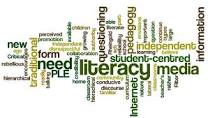Is your cheese cowy, catty or brothy? Researchers devote their efforts to finding the right words of description
The 21st century, at its birth, saw cheese researchers in something of a frenzy trying to solve the industry’s great language problem. The problem is this: say what you will, the taste of a cheese is hard to describe.
This cheese – this one! – is better than the others, you insist. But how can you say why? Which words would cause competent cheesiasts, munching this same cheese and hearing you speak, to all agree?
Researchers chose to concentrate on cheddar. One must start somewhere.
In 2000, Jane Murray and Conor Delahunty of University College Cork rejected all earlier cheese-language-making attempts, complaining that “the method by which these were selected” was vague.
Murray and Delahunty went at it with 25 volunteer taster/talkers and samples of Ballyclough cheddar, unislim reduced-fat cheddar-type, and other cheddary cheeses available in Ireland. Their resulting paper, Selection of Standards to Reference Terms in a Cheddar-Type Cheese Flavour Language, serves up a list of 21 terms to be used singly or in judicious combination: pungent, caramel, sweaty, creamy, fruity, buttery, rancid, cheddary, mushroom, mouldy, nutty, smokey, soapy, processed, sweet, salty, acidic, bitter, astringent and balanced.
Soon after, MA Drake of North Carolina State University, together with several colleagues, tested a similar list on people in panel discussions at which cheese was munched. (“Cheeses were sliced into cubes using a wire slicer within two hours of presentation. Cheeses were tightly wrapped in foil prior to presentation.”) The munching, and some data crunching, produced firm statistical findings (“The flavour cowy was correlated with age and sourness, but was not correlated to any other flavours or tastes”). Drake’s team settled on 17 words – cowy, catty and brothy among them – that “describe and differentiate the majority of flavours encountered in cheddar cheese”.
Here’s the official definition of cowy: “Aromas associated with barns and stock trailers, indicative of animal sweat and waste.”
In 2005, Drake and an expanded team in Ireland, New Zealand and the US compared three advanced, slightly differing cheddar-cheese languages. Each had its quirks.
The Irish cheese language included the phrase processed flavour (defined as “a bland, shallow and artificial taste”). New Zealand’s language featured the word dishcloth (officially: “the flavours associated with the aroma of an old used dishcloth”). America’s used the term mothball/feed (meaning “aroma associated with mothballs or protein catabolism, sometimes reminiscent of silage or grass compost”).
The researchers conclude that, for cheddar, “precise international communication” is possible, but caution that “pinpointing the exact nature of these differences poses a challenge”.
Making a cheese language, like making cheese, can be a lengthy process. Words – the right words – have long been important to cheese-makers and mongers. Scottish-born Canadian James McIntyre, known to minor historians as “the cheese poet”, sanctified this c1889, when he wrote:
Then let the farmers justly prize
The cows for land they fertilize,
And let us all with songs and glees
Invoke success into the cheese.
• Marc Abrahams is editor of the bimonthly Annals of Improbable Research and organiser of the Ig Nobel prizes
via Education: Research | theguardian.com http://www.theguardian.com/education/2013/nov/11/lexicon-cheese-researchers-words-description
